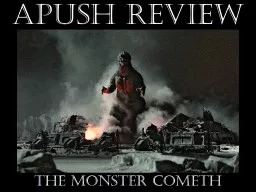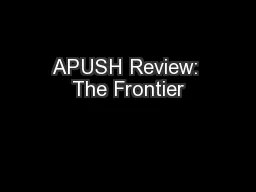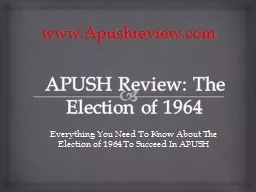PPT-APUSH REVIEW THE MONSTER COMETH
Author : natalia-silvester | Published Date : 2019-06-20
SUPREME COURT CASES I The Marshall Court and the Limits of Federalism Marbury v Madison 1803 Judicial Review The Engine that Drives the Court McCulloch v Maryland
Presentation Embed Code
Download Presentation
Download Presentation The PPT/PDF document "APUSH REVIEW THE MONSTER COMETH" is the property of its rightful owner. Permission is granted to download and print the materials on this website for personal, non-commercial use only, and to display it on your personal computer provided you do not modify the materials and that you retain all copyright notices contained in the materials. By downloading content from our website, you accept the terms of this agreement.
APUSH REVIEW THE MONSTER COMETH: Transcript
Download Rules Of Document
"APUSH REVIEW THE MONSTER COMETH"The content belongs to its owner. You may download and print it for personal use, without modification, and keep all copyright notices. By downloading, you agree to these terms.
Related Documents














